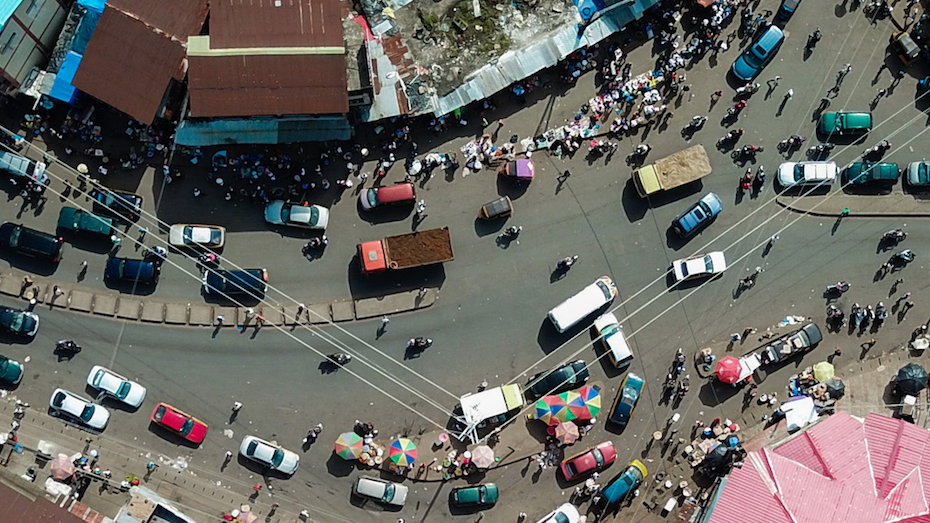Greenhouse gas emissions equal air pollution
07/12/2023
07/12/2023


In recent years we’ve all become all too familiar with green concepts such as enhancing sustainability, curbing greenhouse gas emissions and addressing climate change.
Governments, NGOs, think tanks, scientific bodies and academia have all shed insightful thoughts, via an array of media outlets, over the years, on actions to take based on credible research, data and approvals from respectable peers.
At the same time, there exists a small number of ‘industrialists’ who have been voicing that “Climate change has always existed - it’s nothing new” and they simply say:
“So what ?” to climate activists.
In response, climate activists respond the difference today compared to pre-industrial revolution days, is a hugely speeded up the rate of climate change - worldwide!
The culprits are our increased population growth, ever-rising consumption of fossil fuels (despite new deployments of electric and hybrid vehicles), and agricultural-related activities that have led to deforestation (to name but a few) activities that pollute our atmosphere.
The famous Austrian actor, bodybuilder and California State Governor, Arnold Schwarzenegger, passionately hit the nail on the head in a BBC interview in 2021 when he roared:
“Climate Change is caused by pollutants - let’s terminate pollution!”
And…
“We (as a global society) need to get ‘the message through’!”
One major way to do this is to focus on understanding the available (and accessible) past and present data and information we have on global pollution levels, not just greenhouse gas emissions… and make the maps to help lead the change…
The crucial bit we have to get across is that our industrial global pollution levels are linked to carbon emissions and the majority of other greenhouse gasses, for which they are a very good proxy, which in turn affects the trajectory of climate change.
So, mapping global pollution and trying to eliminate that, must therefore be a cross-cutting issue upon which climate activists and climate deniers can at least in theory, agree.
Global pollution trends, the limited data, and gaps in data
The Lancelet Planetary Health highlighted in March 2023 that Fine Particulate Matter (PM) is a leading risk factor for premature mortality and morbidity worldwide. The estimates of global PM concentrations stand as a prerequisite for health risk assessments of global air pollution.
Current efforts to gain more accurate insight into PM trends globally have been positively supported by the expansion of the World Health Organisation's ambient air pollution monitoring databases. However, an issue in the form of frequently sparse spread and poor homogeneity in the distribution of monitoring stations exists. As a result, precise measurement of global PM exposure is challenging to capture.
Fortunately, the deployment of improved statistical and machine learning techniques, as well as the use of emerging satellite products, chemical transport model simulations, and ground monitor expansion is helping to increase the accuracy of assessments of PM concentrations globally.
Capturing information on long-term vs short-term global pollution trends
To date, global PM estimation studies have usually been conducted on a long-term (annual or monthly average) basis. And few studies have analyzed the short-term (from hours to days) exposure to PM concentrations at a global level. China, Europe and the USA have all greenlighted studies examining daily PM concentrations at a national and regional level, however, there are not many studies on PM exposure and spatiotemporal variations at a global level.
The absence of uniformity in global training data and inconsistency in estimation methods create difficulties in comparing the previous regional estimates and in providing a global view of the spatiotemporal distribution in PM exposure.
The Lancelet Planetary Health comments on how there is a crucial need to estimate daily (short-term) PM concentration and its associated spatiotemporal variations with unified study designs, modelling approaches, and data sources.
The power of maps to fill the data gaps in global pollution data trends
Global MapAid’s role
Global MapAid emerges as a pivotal player in filling these data gaps. By supporting initiatives like www.addresspollution.org in the UK, Global MapAid utilizes geographical maps to visually represent pollutant levels, effectively communicating crucial information. Led by CEO Rupert Douglas-Bate, the organization's team of skilled environmental mapping engineers transforms complex data into accessible visuals, empowering individuals and companies to make informed decisions for environmental sustainability.
One of our collaborative initiatives is www.addresspollution.org in the United Kingdom, to map pollutant levels versus post codes.
Conclusion
The undeniable link between greenhouse gas emissions, air pollution, and adverse health effects demands immediate attention. To combat this global threat, unified action is imperative. Global MapAid stands at the forefront, armed with the expertise to fill data gaps and empower individuals to take informed steps. The time has come for collective efforts to understand, mitigate, and ultimately eliminate the menace of air pollution.
Join the cause; support initiatives like Global MapAid in their mission to safeguard our planet.
If you live in the UK, write to your MP with the results of his or her pollution from their constituency work address or the House of Commons postcode (SW1A 0AA) by using www.addresspollution.org. Wherever you come from across the planet, explain the linkage between greenhouse gases and pollution by referring your leaders to Arnold Schwarzenegger’s contentions about the connection.
Support Global MapAid and similar initiatives. Stay informed, and advocate for policies that prioritize environmental sustainability. The power to combat climate change lies in our collective actions and actively challenging the status quo.